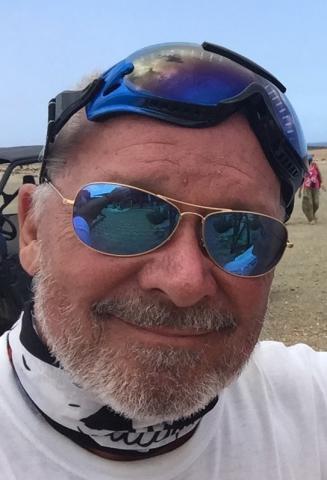I am a survivor. My story is one of early detection. My story could be very different if not for that.
In 2015, I had a pulmonary embolism. A CT scan of the embolism showed that there were two areas that should be followed for possible tumor development. Luckily, I was consistent in my follow-up scans, as ten months later, those two areas were confirmed to be stage I NSCLC multi-focal tumors.
I went to an oncologist, who recommended a lung resection. Luckily, my family pushed me to get a second opinion from a pulmonologist at the Mayo Clinical to be sure this was the best option. I am so grateful I chose to get a second opinion. While determining a course of action, the pulmonologist also determined that I have severe COPD; a lung resection would have provided disastrous results for me. I can’t stress enough the importance of getting a second opinion; two years later, a local cardiologist wanted me to get open heart surgery, but a second opinion found I ran the risk of not surviving open heart surgery because of the treatment I received as part of my cancer. It is essential to ask for a second opinion when your life is on the line.
The pulmonologist recommended a course of stereotactic body radiation therapy (SBRT). While undergoing treatment, I made it my mission to research every part of my condition(s) and therapies on the internet and in publications. In a perfect world, we would know everything the oncologist, radiologist, chemist, pharmacist, physicist, etc. knows to better understand what’s happening to us and what treatment options are the best for us. It’s essential to understand why our providers ask the questions they do and how we should provide answers that will help them treat us better. Obviously, you cannot be all those people so the best thing you can do is to learn as much as possible to help them do their job. I strongly believe that patients have to be as knowledgeable as possible to become “good” patients and to enable doctors to do the best job possible.
Subsequent to the radiation, I went through a number of “unintended consequences” resulting from the radiation and steroid therapy to treat these conditions. Through quarterly scans over the next 18 months, we were comforted that the tumors were resolved, but the side affects were more troublesome. However, I understood the mortality expectations of lung cancer and severe COPD; if the side effects didn’t kill me, I was ahead of the game. Mentally, I focused on doing something in response to the side effects rather than passively letting them make matters worse. I changed diets, I exercised as much as possible, and I took a number of esoteric steps such as salt therapy to improve breathing. All these actions resulted in me focusing on improving my situation and had a positive influence on my emotions – I wasn’t fearful anymore and knew I would beat the 50% five year survival odds.
A year after SBRT, my aortic valve was replaced, stents were placed in coronary arteries, and a pace maker implanted. Ninety days following the heart procedures, I learned that the three cancer tumors were resolved and that my heart function was normal. Even better, the two suspicious areas in my lungs that could represent additional cancer tumors were resolved. No further therapy for lung cancer or heart disease is required at this time.
I am so grateful to be cancer-free. I owe this all to finding the lung cancer at stage I while it was still treatable. While the therapy caused many other issues that had to be resolved, it certainly is better than the outcome that would have resulted if I had ignored the early signs of cancer. I recognize how fortunate I am and I have learned so much through this process that I want to help anyone I can that seeks answers to their treatment.
As of May 2019, the three tumors are stable and no other tumors have presented themselves for treatment.
Related Reading:
Finding Strength with Lung Cancer
 Robert Tumanic divides his time between homes in the Caribbean and the Upper Midwest. He is a retired partner from Deloitte and currently advises clients in the energy and financial industries. He is passionate about healthcare delivery and helping patients aware of their healthcare options.
Robert Tumanic divides his time between homes in the Caribbean and the Upper Midwest. He is a retired partner from Deloitte and currently advises clients in the energy and financial industries. He is passionate about healthcare delivery and helping patients aware of their healthcare options.
